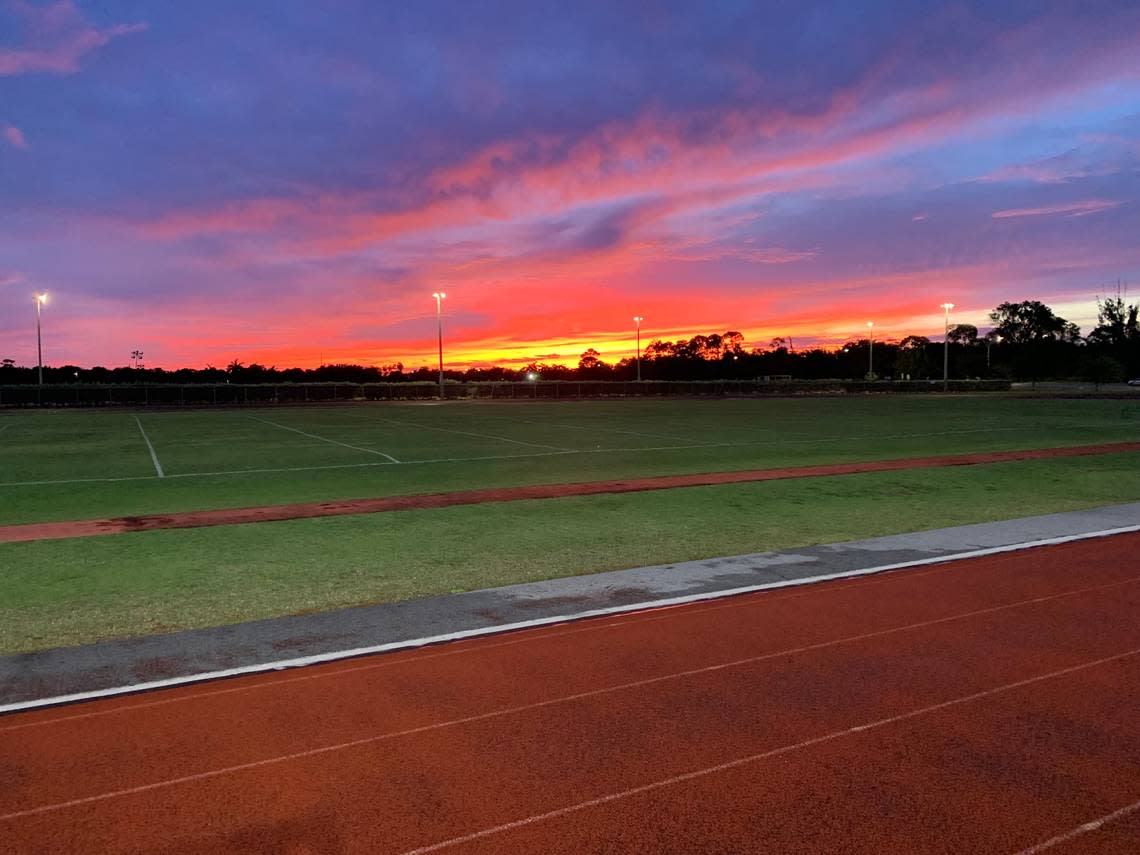A plume of Saharan dust is headed toward South Florida. Here’s what to expect

A large plume of Saharan dust is heading to South Florida this weekend, forecasters say. And while the dust can tamp down the rain, it can hamper those with allergies and respiratory issues and potentially lead to higher temperatures in an already scalding summer.
This is the second round of dust, coming after plumes hit at the end of June.
READ MORE: Saharan dust is coming to Florida. Here’s how it can affect hurricanes and your health
Saharan dust is “a mass of very dry, dusty air that forms over the Sahara Desert during the late spring, summer and early fall,” according to the National Oceanic and Atmospheric Administration.
The first plume will come Friday night and continue through the weekend, resulting in drier conditions and less rain. A second wave is expected between Tuesday and Wednesday, once again reducing the chance for precipitation, according to NWS Miami Meteorologist Ana Torres-Vazquez.
But the dust won’t completely deter the rain.
“We do have the approach of a tropical wave on Monday, which will bring increased moisture and a 70% chance of rain across much of the region throughout the day,” said Torres-Vazquez.
7/18 at 8:15am: A plume of Saharan Dust is forecast to arrive across South Florida this upcoming weekend. This may result in reduced air quality, hazy skies, as well as the potential of colorful sunrise and sunsets. pic.twitter.com/chRwQ0KGjj
— NWS Miami (@NWSMiami) July 18, 2024
Temperatures through the two periods will hover around the low 90s, which is typical for this time of the year. The NWS says it’s too early to tell if higher temperatures could result, but there’s a chance the dust could lead to more heat.
On the plus side, Saharan dust minimizes hurricanes from forming and strengthening, as the dust chokes the tropical systems, according to the NWS and NOAA.
And the dust brings beautiful sunsets.
Negative aspects
Saharan dust can irritate the eyes, ears, nose and throat and impact those with allergies or respiratory issues as air quality is affected. Expect hazy skies.
Vulnerable populations should take precautions as the dust settles into the atmosphere, limiting outdoor activities and keeping allergy medication on hand.
Saharan dust also transports bacteria, which leads to more algae blooms, which harm coral reefs. The increased algae can mean more red tide.

